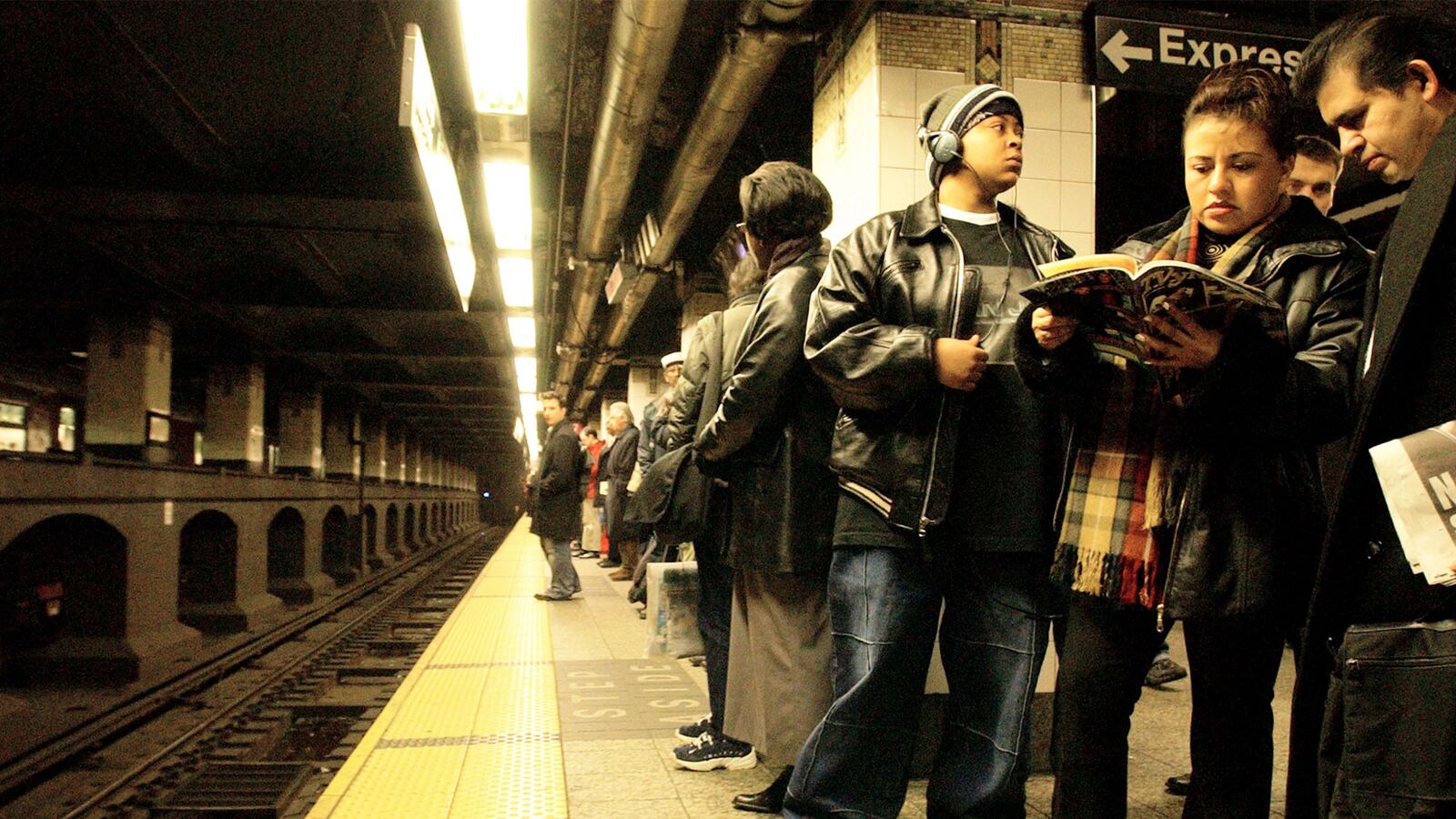I got on a 1 train heading toward the Upper West Side of Manhattan the other morning at about 10 a.m. It was still fairly crowded, even though rush hour had been swallowed by the clock.
I was standing toward the back of the car, near the doors. Most of the passengers seemed to be observing the same standard subway rule: Establish no eye contact. Look at your smart phone. Read a book. Turn the page of a tabloid. Or simply fixate a stare on a spot through the dirty glass windows as the train pushes its way through the dark bowels of a city where the subway, in addition to being the quickest way to travel to different neighborhoods, is also the ultimate democracy.
All levels of affluence can be found here. Hundreds of nations are represented. Several languages are heard. And, almost always, the passengers mind their own business.
Almost always.
On this morning, a young guy, maybe mid-20s, had boarded the train at West 50th Street. I got on the same car, right behind him. I stayed at the back of the train, right where I walked on. He went to the middle of the car and stood by the doors.
As soon as they closed and the train began moving toward the next stop, Columbus Circle, he began shouting at a couple of women sitting right in front of him. It was not that hard to hear him because he had a big, booming voice and was using it now as a weapon, the volume increasing with each new stream of abuse coming out of his mouth.
The two women got up from their seats and tried to move toward the back of the car where I stood, watching and listening along with the rest of the passengers. The guy, still screaming, started to follow them. As the train slowed for the Columbus Circle stop, he yelled a particularly brutal word at them.
Then a young man who had been sitting near the women, holding a golf bag between his legs, stood and shouted two words at the deranged guy: “Hey, asshole!”
The crazy guy stopped, seemingly stunned, turned away, and as the train pulled into Columbus Circle, stepped out of the car and disappeared into the throng of passengers without a word or a look back. And as this took place, I began thinking about Kevin Sutherland and Jasper Spires.
Sutherland grew up in Trumbull, Conn., about an hour and a half’s drive from New York City. He went to American University in Washington, D.C., and fell in love with the nation’s capital and its principal industry, politics.
A week ago, on July 4, he got on a Metro train, Washington’s subway system, to head downtown to meet friends. It was about 1 o’clock in the afternoon of a day when the District was full of tourists and residents celebrating one of the country’s best holidays.
Jasper Spires was on the same train, same car, too. He is 18 years old, slightly built, about 5-foot-5 and 125 pounds. He had been arrested the evening of July 2 and charged with robbery, but the charge was dropped to a misdemeanor the next morning, and Spires was popped free for the July 4 weekend.

Nobody really knows what was going through Spires’s mind when he got on that subway car, whether he was whacked out on some synthetic drug, but he was there and he was dangerous and he had a knife, witnesses said. According to reports in The Washington Post, Spires zeroed in on Sutherland.
He allegedly began beating him, knocking him to the floor of the car, kicking him and then stabbing him. The knife kept going into Kevin Sutherland, 20, 30 times.
The other passengers in the car, more than a dozen, told police they were stunned, scared, frozen in disbelief at the horror unfolding in front of them. Then, apparently exhausted from his murderous rage, Spires reportedly turned toward them and asked, “What y’all got?” as he robbed two more passengers.
Kevin Sutherland, a young man filled with dreams and idealism and optimism, too, lay dying on the floor of a subway car in our nation’s capital as Jasper Spires reportedy got off at the NoMa-Galludet station and disappeared for a day before being arrested Monday and charged with first-degree murder. Sutherland, at 24, became the first homicide victim in the history of the D.C. Metro system.
Naturally, as soon as the story gained legs and went viral, social media was filled with heroes and tough talkers who would have intervened and saved Kevin Sutherland’s life. From a comfortable seat in front of their laptop or using their unthreatened fingers on a smart phone, hundreds weighed in on what they would have done: tackled Spires, hit him with a briefcase, charged him with several others, knocked him down, stripped him of his weapon. And, of course, if gun laws were not so strict (they’re not strict at all), someone could have been carrying, taken out their handgun, and simply shot Spires.
It is not known if any passengers used their phone to take pictures of the attack or a video. It is not known how many, if any, tweeted something about what went down a few feet from where they stood, paralyzed by fear, all of them in shock.
The reality is that nobody knows how they would react in a similar situation. We’d like to think we’d behave honorably, with courage and care, but we simply cannot know until a moment like that occurs.
But we live in a culture where everyone’s opinion, view, and assessment of situations and people spill across social media, a lot of it anonymously, much of it shaped by mindless meanness and ignorance. The passengers on that Metro train, witnesses to homicide, have been brutalized by a pack of clueless strangers asking questions about their behavior on the afternoon that Kevin Sutherland was murdered in front of them, all of it happening in a few seconds.
Not too many are asking a larger question: Why was Jasper Spires allowed to walk out of court the day before he took a train, out of his mind, a knife in his hand, on the afternoon of July 4?






